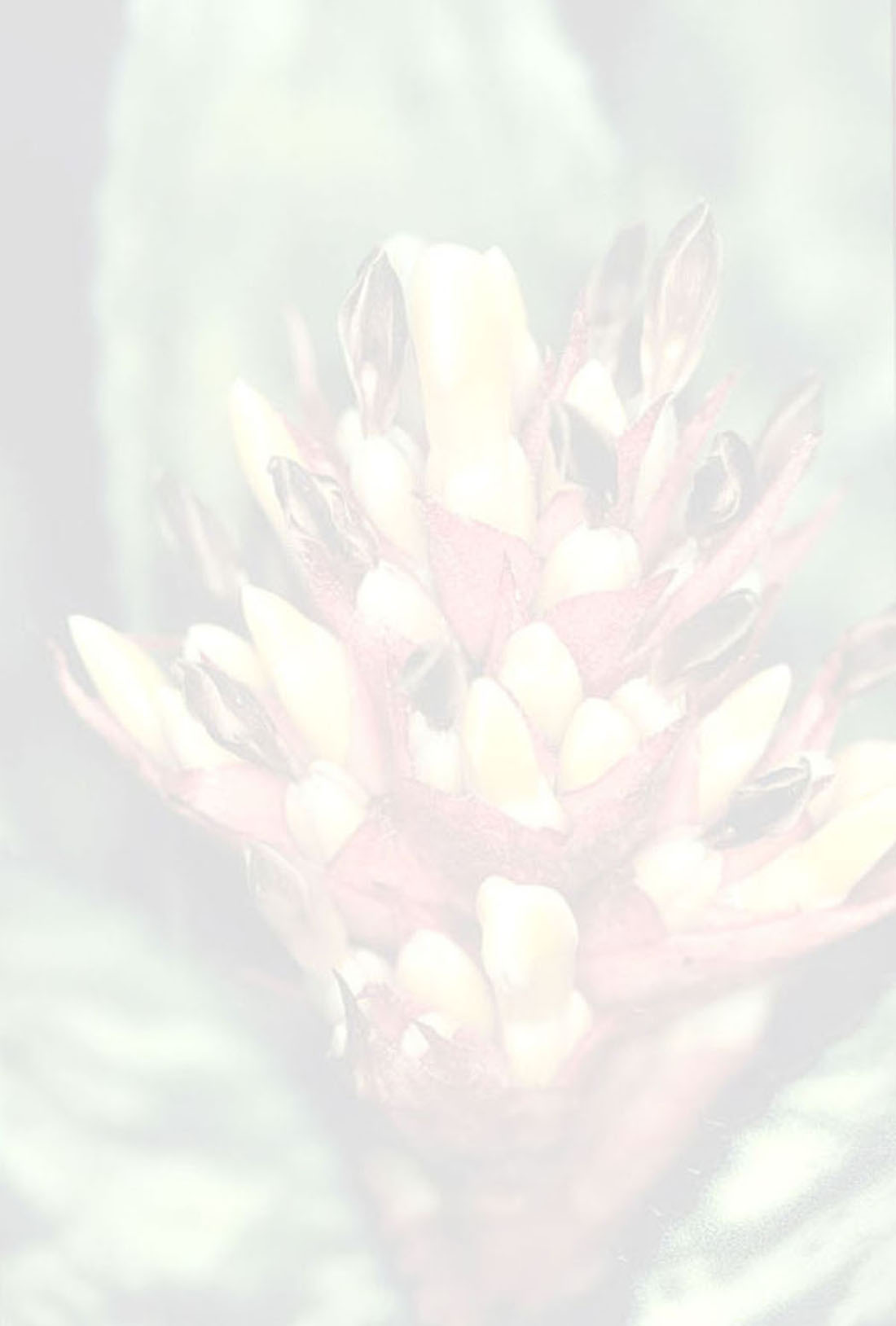



plant terrestrial up to 70 cm high. leaves about 12, all similar, rosulate, ligulate, 36–65 cm long, forming a funnel shaped utriculum; sheath elliptic, 13–15 cm long, 7–9 cm wide, both sides dense and adpressed brown lepidote, edges in the upper quarter minute and dense spined; blade linear, 20–40 cm long, 3–5 cm wide, outside dense, inside inconspicuous white lepidote, edges minute spined, spines hardly more than 1 mm long, ca 8 mm apart, tip rounded, recurved and a tenuous mucro. inflorescence: peduncle erect, 35–40 cm high, 5 mm thick, white lepidote, internodes ca10, lower ones 6 cm long, upper ones gradually shorter; peduncle bracts lower ones totally enclsing the peduncle, towards the top minute serrulate, 6 cm long, 3 cm wide, upper ones spreading to divaricate, wide lanceolate, to the top of the peduncle ovate with acuminate becoming rigid, clustering near the inflorescence, 6–9 cm long, 2–3 cm wide; fertile part erect, simple, strobiliform, cylindric 4–8 cm long, 2–3 cm diam; floral bracts suborbicular, concave, pink, white lepidote, tip blunt and apiculate, back three keeled and gibbose, 8 mm diam, equalling the ovary and enclosing it but never totally. flowers subsessile 20 mm long; sepals asymmetric, ovate, 12 mm long, 5 mm wide, connate for 4 mm, yet by no means mucronate, whitish, outside white lepidote; petals spathulate, acute, 17 mm long, white, later becoming blackish, near the base 2 fimbriate ligules. stamens 12 mm long, filaments complanate, anthers 5 mm long, linear, base obtuse and lightly sagittate, tip apiculate. pistil: ovary 5 mm long, subcylindric; epigynous tube l mm long; placenta joined to the top of the locules; ovules long caudate.Edited from (02-12-2014): Bradea. (protologue) .